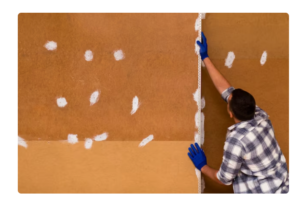According to the IICRC S500, in the case of a water damage leak affecting the flooring and resulting in the need to proper drywall removal with insulation, the following steps should be followed:
- Inspection: Conduct a thorough inspection of the affected area to determine the extent of the damage and the appropriate course of action.
- Water extraction: Remove standing water using appropriate water extraction equipment.
- Drying: Use air movers, dehumidifiers, and other equipment to dry the affected area and surrounding materials thoroughly.
- Containment: Set up containment to prevent the spread of contamination and protect unaffected areas from exposure.
- Removing damaged materials: Remove and dispose of any damaged building materials, including drywall with insulation, as necessary.
- Cleaning: Clean and sanitize the affected area and surrounding materials to remove any residue and prevent mold growth.
- Restoration: Repair or replace any damaged materials and restore the affected area to its pre-loss condition.
These steps should be performed by a qualified water damage restoration professional
Following the IICRC S500 standard for Proper Drywall Removal After Water Damage, restoration professionals can assess the extent of the damage, effectively remove standing water dry the affected area and materials remove damaged materials, clean and sanitize the affected area and restore the property to its pre-loss condition.
This helps minimize the potential for secondary damage, such as mold growth, and ensures that the property is safe and habitable.
The IICRC S500 standard for Proper Drywall Removal After Water Damage also promotes
- professionalism and accountability within the water damage restoration industry by requiring professionals to adhere to specific procedures and guidelines.
- This helps to protect the health and safety of the occupants
It is important to have the water damage restoration process performed by a qualified and experienced specialist. Attempting to clean up or restore the affected area without the proper knowledge and equipment can cause further damage and result in an ineffective restoration.
Choosing a water damage restoration specialist
with a proven track record of quality work and customer satisfaction is important. Some signs that a specialist may need to be more trustworthy include a need for proper certifications
Neglecting the issue or choosing an untrustworthy specialist can result in increased damage, health risks, and a poorly executed restoration.
Specialists in the water damage restoration industry are
- Individuals trained and certified to perform the various tasks required
- individuals or companies who need to gain the proper training, certification, or experience to perform water damage restoration effectively.
Important!
Choose a water damage restoration specialist who is properly trained and certified, has a positive reputation in the industry, and is willing to provide references and show examples of their previous work.



